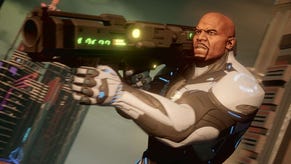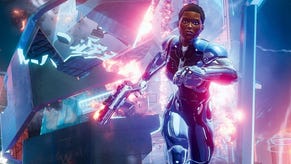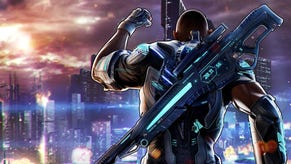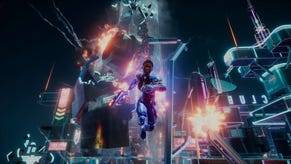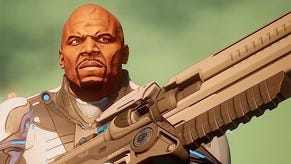Clearing up confusion surrounding Crackdown 3 destruction
It was always going to be in multiplayer only.
When Microsoft showed more of open world blow 'em-up Crackdown 3 during its E3 2017 Xbox media briefing, it did so with a trailer that starred American actor Terry Crews. The only problem was, we didn't get a good look at gameplay, nor did we see any of Crackdown 3's ambitious destruction.
This sparked a number of questions about the destruction in Crackdown 3. Had it been ditched? Is the game still using the fancy dedicated server tech to make blowing up buildings ultra realistic in the open world?
It turns out Microsoft decided to focus on Crackdown 3's campaign at E3, and the dedicated server-powered destruction is limited to multiplayer. There is basic destruction in the campaign, but not the kind that raised eyebrows back in 2015.
Before we dive into the detail, it's worth going over what Microsoft has said about Crackdown 3. Microsoft's official blurb makes competitive multiplayer sound like a separate game that's included with the Crackdown 3 package:
The game, due out alongside the Xbox One X on 7th November, is developed by three separate UK studios. Sumo Digital, perhaps best known for making Sonic & All-Stars Racing, is in charge of the campaign. Reagent Games, whose creative director Dave Jones co-founded the now defunct Realtime Worlds, maker of the first Crackdown game, and Ruffian Games, who made Crackdown 2, are building the competitive multiplayer portion of the game.
Crackdown 3 hit the headlines when Jones showed off the advanced destruction tech that would power the game. The idea is that dedicated servers make available the compute power needed to fuel realistic destruction of multiple buildings in the open world.
The video below, made by IGN during Gamescom 2015, goes into detail on how the tech works.
Fast forward to E3 2017, and fans had hoped to see more of this tech in the game, or at least get a sense of how it works as part of gameplay. But a proper multiplayer reveal will have to wait until a later event this year.
"The destruction was always planned for the multiplayer side of the game," Gareth Wilson, design director at Sumo Digital, told me at E3 last week.
"We've got this big competitive multiplayer game where you play in a large multiplayer arena, 20-30 minute battles, and the aim of the game is to smash the crap out of their tower, and they have to destroy your tower before the time runs out.
"That's where the destruction works great."
Wilson explained that Sumo decided against putting the dedicated server-based destruction in the campaign, which can be played cooperatively by up to four people, for a couple of reasons. One, so the game could be played offline. And two, because the story is about saving the city of New Providence, not destroying it.
"What I didn't want to do is put it into the campaign because it would have meant the entire game would have required a constant, high-quality internet connection," Wilson said.
"I wanted people to be able to play it when they went away on holiday.
"Also, the destruction didn't work narratively. You're meant to be saving the city. It was a much longer game experience.
"Multiplayer is where the destruction is," Wilson said. "With hindsight, we didn't do a particularly good job of messaging that. It was always that we were going to have two games: a classic campaign with four-player co-op, which is a homage to the original title with similar mechanics and updated graphics and more narrative. And then the cloud stuff was always going to be in the multiplayer."
Despite the E3 no-show, Crackdown 3's destruction is "all going fine", Wilson stressed. "We hadn't shown any of the campaign off, so we wanted to show it at E3."
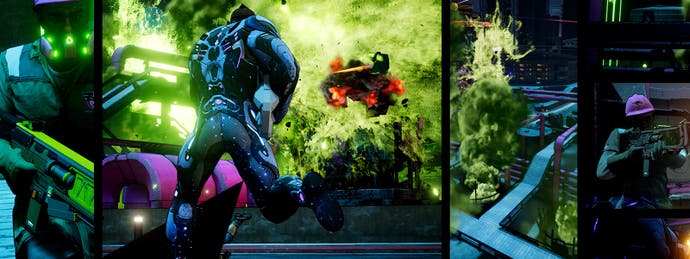
On Crackdown 3's campaign, Wilson said it's a roughly 16 hour experience (although longer if you hunt down all of the agility orbs), with a city two-and-a-half times bigger than that of the original game ("some of the buildings are nearly a kilometre high, so way higher than the original Agency tower").
Narratively, the campaign is split up into a number of crime bosses you have to take out. These crime bosses control particular parts of the city. One looks after the chemical area. Another is the de-facto police force. The player - or players - are charged with taking out these various kingpins.
Like the original Crackdown, you can take these bosses out in any order. So, you can try take out the toughest crime lord as soon as you start the game, although you probably won't get very far. The point is, everything is open from the start.
When you've done enough damage to a particular crime boss (or annoyed them to the point they're furious with you), they will retaliate. They could rock up in tanks, vehicles with turrets or even drop pods. Each kingpin reacts differently.
This structure means Crackdown 3 does not have any missions. So, if you find yourself in a losing battle, you can run away. But once a kingpin is triggered, they're out in the open world - and they could attack any place, any time.
"Behind the scenes, we've got different modules which are running, but they're always on all of the time," Wilson said. "We don't have different mission areas where you speak to someone and then suddenly all these things happen. They're all in the game.
"So, if you're fighting someone like Sorensen [one of the kingpins] and you're like, whoa, I'm getting my ass kicked and you run away, once she's out, she's out in the world. It's not like the mission goes away and disappears or there's a big blue barrier like in Assassin's Creed and you can't go any farther.
"She's out and about. She might just turn up when you least expect it, somewhere else. So, you could be in the middle of fighting the chemical boss and then a flipping dropship comes over."
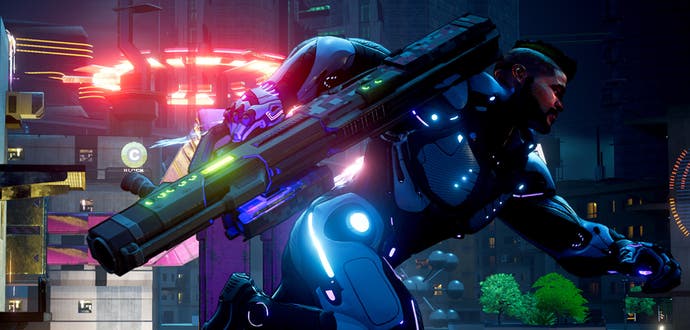
Crackdown 3 loads once and then it doesn't load again. The game's streaming system means there are no load times. Related, when you die, the world continues on, waiting for you to respawn.
"The game doesn't give a monkeys if you die," Wilson said. "There is literally no load. You just pick a supply point you've captured, spawn back in again, and the world just carries on.
"We built it as a co-op game from the ground up. There's no pause menu, really. Even in single-player, we imagine it as being a co-op game that just happens to have one person in it. The whole game is constantly moving and playing without you. It's simulation focused."
Back to the destruction. While the server-based destruction is not in the campaign, there is what's described as "local destruction". This works like the destruction seen in other open world games, such as Just Cause, where there are particular objects you can blow up.
"Gang installations you can absolutely take out," Wilson said. "Without giving too much of the game away, by the time you have finished the game, the landscape will have changed."
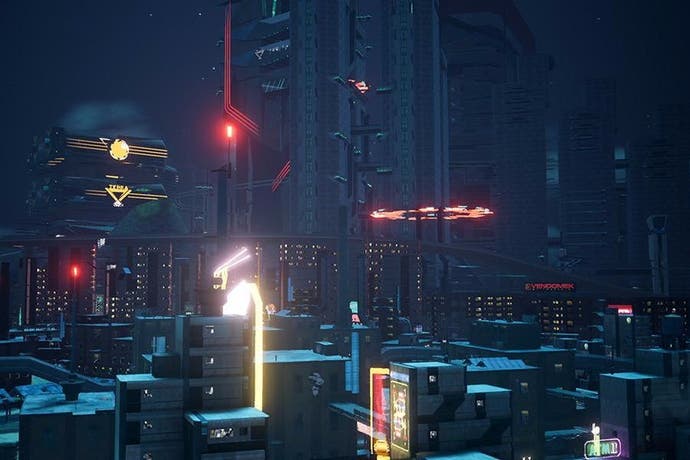



.jpg?width=291&height=164&fit=crop&quality=80&format=jpg&auto=webp)
